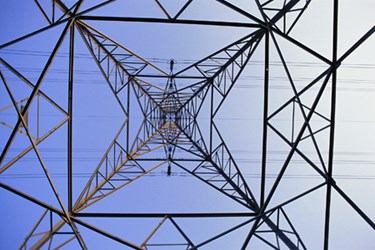TIA Releases New Antenna Mounting Classification Standard
By Jof Enriquez,
Follow me on Twitter @jofenriq

The Telecommunications Industry Association (TIA), a leading trade association of suppliers and manufacturers in the global information and communications technology industry, has issued a new antenna mounting system classification standard in anticipation of an increase in the number and types of antennas to be deployed for 5G implementations.
TIA-5053, Mounting System Classification, provides users and installers with specific maintenance loads for certain mount classifications, including maximum loads that can be applied to both existing and new mounting systems. Loading combinations are provided in this Standard for the structural design of mounting system members and their connections for the purpose of establishing mount classifications. The document also provides the proper mounting systems required for proposed antenna configurations, many of which are designed for forthcoming 5G networks.
“With 5G and Smart Cities on the horizon, we will see increased demand for wireless service and therefore an increase in antennas being deployed,” Stephanie Montgomery, VP of Technology and Standards at TIA, stated in a report from Inside Towers. “Without proper mounting, those antennas will be useless. I applaud the TIA engineering community for getting this needed guidance out to the industry. Proper use of this standard will save millions of dollars.”
TIA-5053 addresses requirements for mounting systems supporting antennas and related appurtenances, but excludes requirements for rigging or for climber anchorage, as well as the determination of strength requirements for a supporting structure.
The mounting classification methodology and regime were gleaned from stakeholder input from tower owners, contractors, consulting engineers, and mounting system manufacturers by TIA in a bulletin released earlier this year.
TIA-5053 was consolidated and finalized by the TIA TR-14 Structural Standards for Communication and Small Wind Turbine Support Structures subcommittee. This Standard is intended to be used in conjunction with ANSI/TIA-222-H, Structural Standard for Antenna Supporting Structures and Antennas, as well as ANSI/ASSE A10.48, Criteria for Safety Practices with the Construction, Demolition, Modification and Maintenance of Communication Structures.
John Erichsen, Chair of TR-14, stated, “In an ever-changing industry, TR-14 is committed to delivering standards that keep pace with the shifting telecommunications landscape. The new TIA-5053 Mount Classification standard will assist and improve the industries deployment of new technology and improves the integrity of the structures deployed. It was developed with tremendous industry input and collaboration and will be an important allowing wireless technology to deliver on its full potential.”
